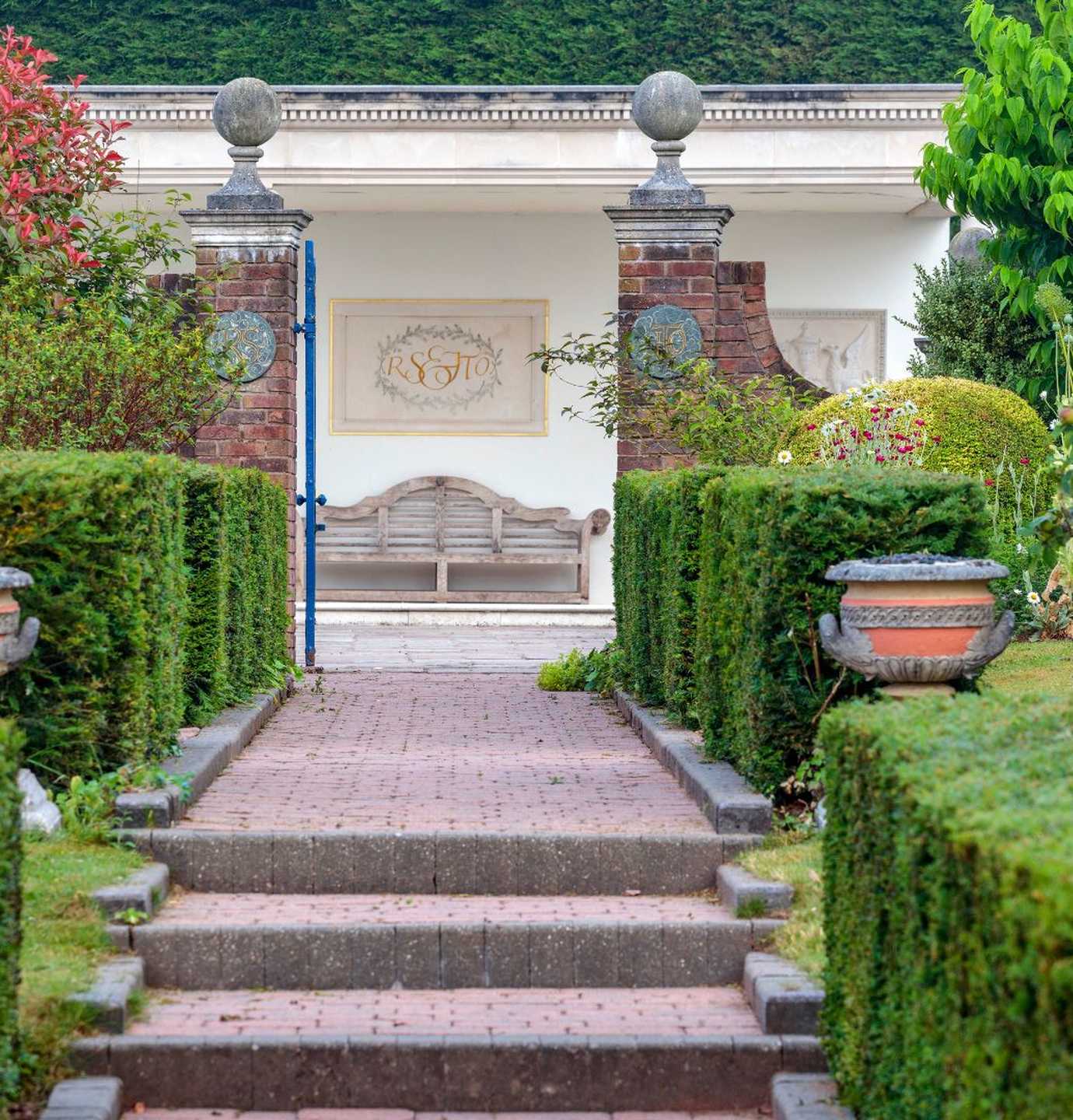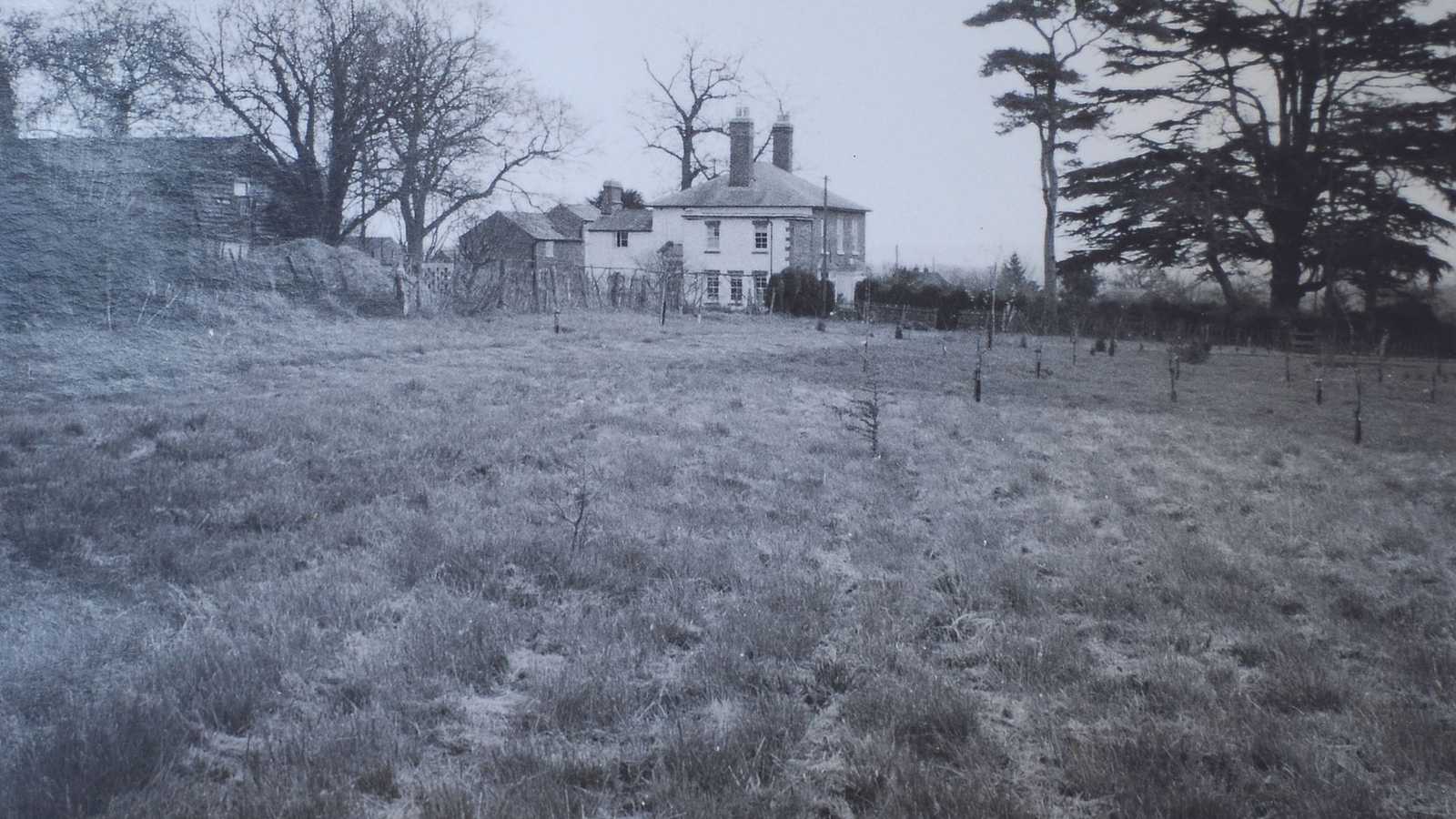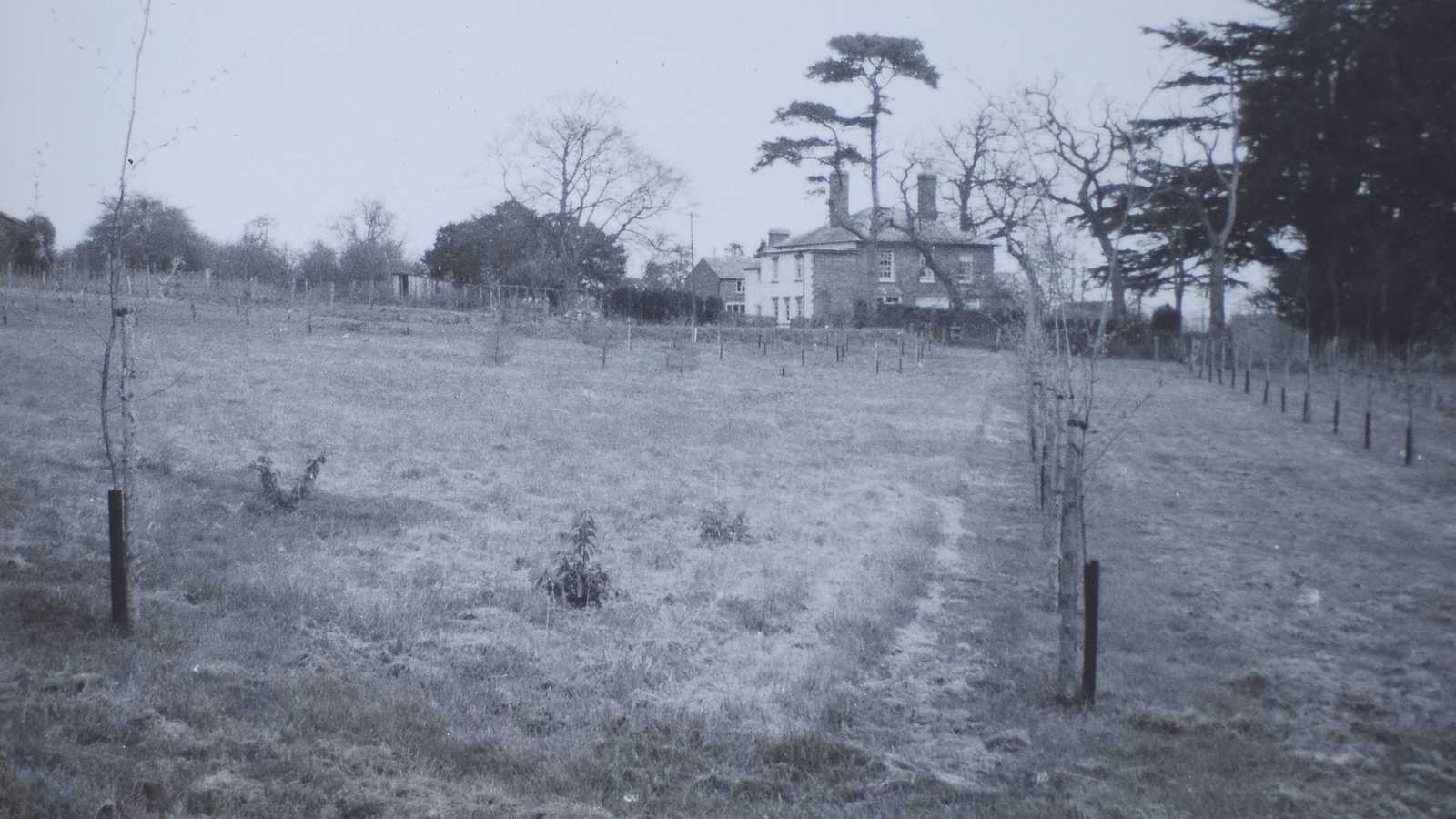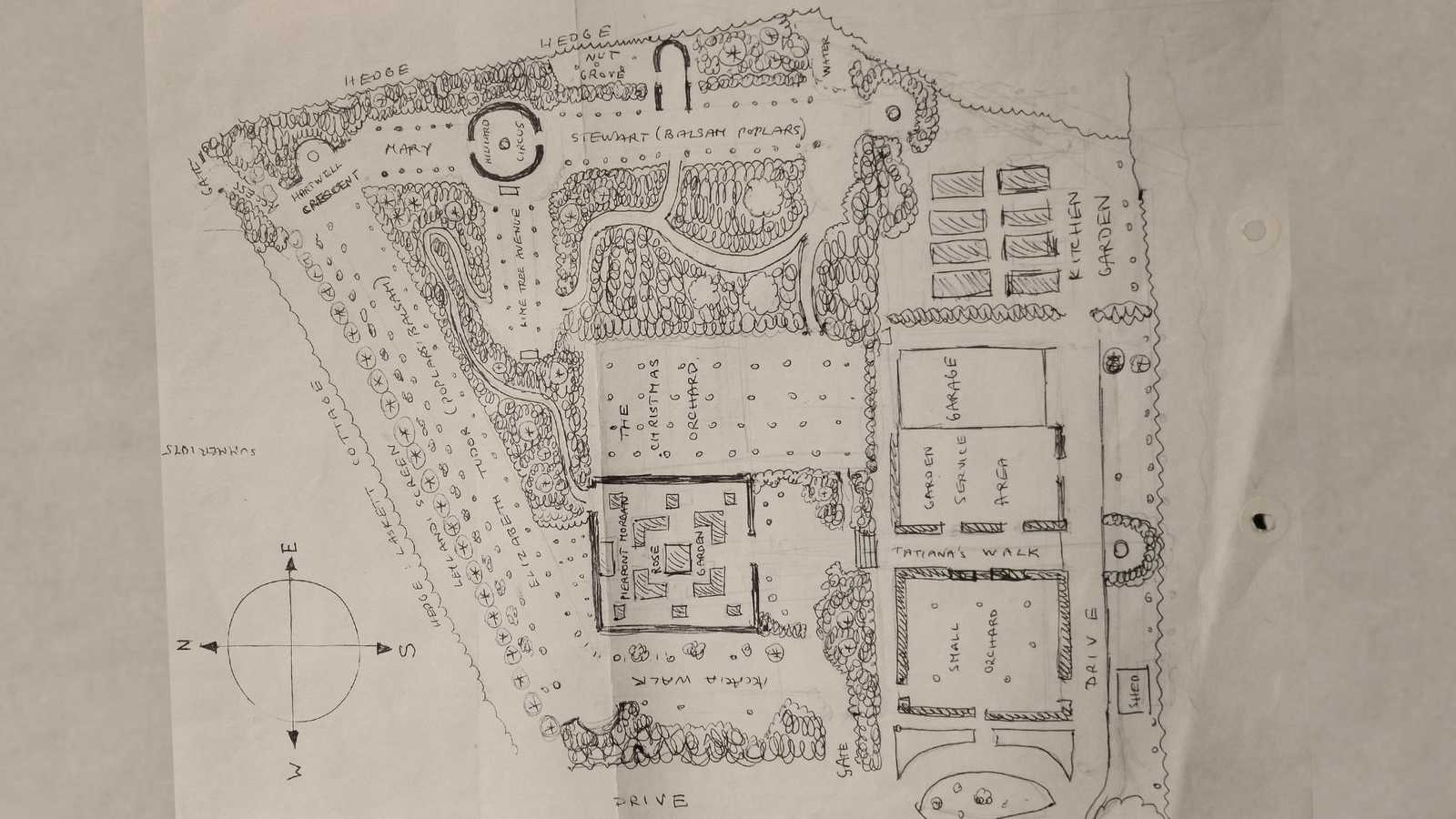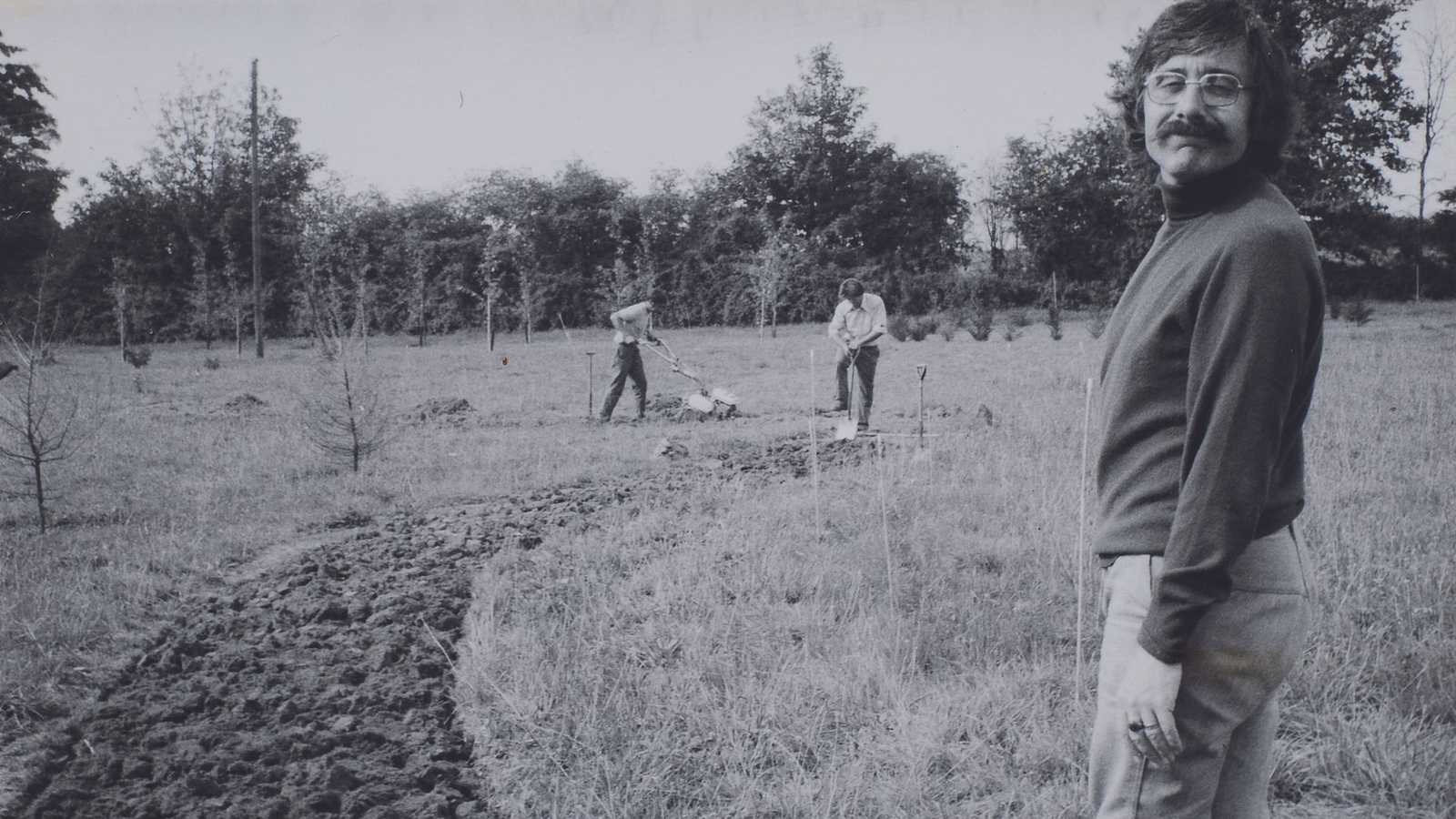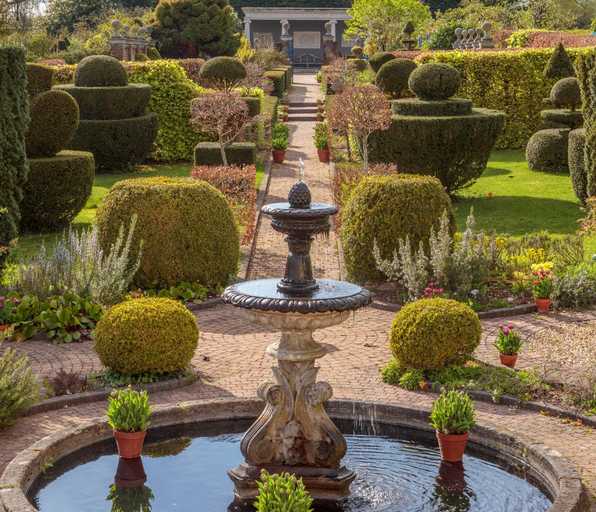
The history of The Laskett Garden
The Laskett Garden, set in the idyllic countryside of Herefordshire on the Welsh borders, are the creation of Sir Roy Strong CH and his late wife Julia Trevelyan Oman CBE. The gardens – created from a bare field – were begun in 1974 and have continued to evolve ever since.
Sir Roy gifted The Laskett to Perennial in 2021 to help people in horticulture and every part has a story to tell of the love of a very happy marriage and the creative landmarks of their lives.
The making of The Laskett Gardens
Sir Roy and his wife came to The Laskett in May 1973. There was no intent of making what many now salute as a remarkable garden. Julia had green fingers, but Roy’s had yet to twitch, which they quickly did, particularly when the farmer – to whom they rented a three-acre field – decided that he no longer wanted it. It was at that point that horticultural madness or furor hortensis set in, and never abated through four decades.
The Laskett Garden has been subject to constant change and development through the years; indeed it is a monument to the fact that gardening is a mutant art. The impulses and inspirations which influenced its design and planting are eclectic and include the formal gardens of Tudor and Stuart England and those of Renaissance Italy. Later, in the 1990s, other places contributed such as Ian Hamilton Finlay’s Little Sparta and Clough Williams-Ellis’ Portmeirion. The Laskett Gardens developed piecemeal as and when its owners could afford it. So, the paving and the sculpture arrived years after the hedges, avenues, shrubs and other trees went in.
For the first 15 years the only extra labour was provided by two gardeners who came for one day once a fortnight. Later that increased to one untrained man full-time and in 2020, two trained gardeners for four days a week. Today, Perennial employ a small team of gardeners who are supported by an enthusiastic and knowledgeable team of volunteers.
Julia died in 2003 and a decision had to be made as to whether the Gardens were to stand still or be subject to further change. By then, conifers which were planted two or three feet high were soaring monsters engendering claustrophobia. The Gardens were also hopelessly over-stocked and much of the planting tired and in need of renewal. Boldly, Sir Roy set out, with the aid of his two excellent gardeners, to take out most of the conifers to let in the light; reduce and re-cut many of the hedges; drastically prune overgrown evergreens; open up vistas to the surrounding countryside; and refresh the planting, emphasising one of the Gardens’ keynote features – Topiary!
The great axis path from the Fountain Court to the Colonnade Court was built, the latter re-laid out and the Silver Jubilee Garden, subject to constant flooding, given drainage and redesigned. Do not be surprised if there are further changes, for change is the lifeblood of any proper garden.
The future of The Laskett
In 2015 Sir Roy Strong CH bequeathed The Laskett to Perennial with a generous endowment to ensure its maintenance for years to come. Perennial will continue to open the garden to visitors for periods of the year, as it does its two other open gardens, York Gate near Leeds and Fullers Mill in Suffolk.
Related articles
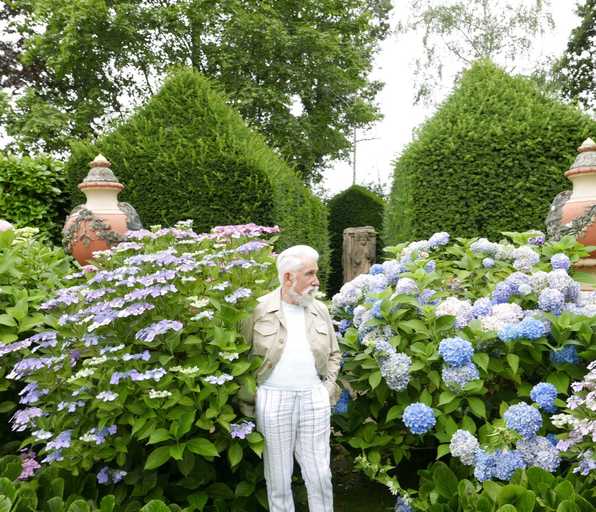
Sir Roy Strong marks 85th birthday by gifting The Laskett Gardens to Perennial
Historian, writer and garden designer Sir Roy Strong CH is marking his 85th birthday by donating The Laskett Gardens to Perennial.
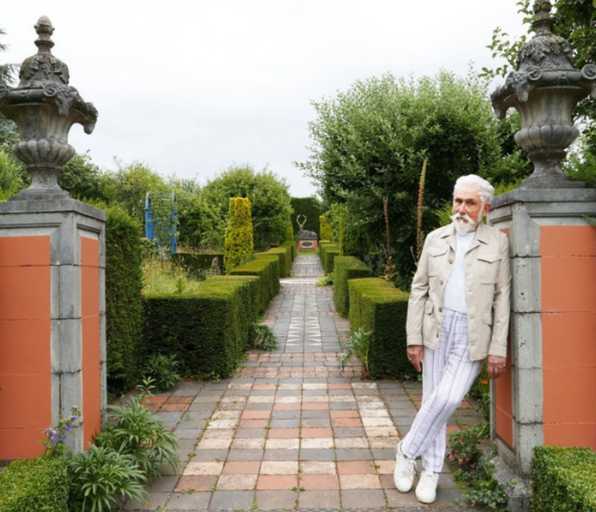
The Laskett, Perennial’s newest garden added to its beautiful collection
Sir Roy Strong bequeaths England’s most written about garden to Perennial – the charity for people in horticulture.
Find out more
Visit The Laskett and make use of an audio guide to take you on a tour of the gardens and have the history of each area explained, narrated by Sir Roy Strong CH.
